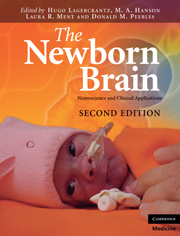Book contents
- Frontmatter
- Contents
- List of contributors
- Preface to the First Edition
- Preface to the Second Edition
- 1 Reflections on the origins of the human brain
- Section 1 Making of the brain
- Section 2 Sensory systems and behavior
- Section 3 Radiological and neurophysiological investigations
- Section 4 Clinical aspects
- Section 5 Follow-up
- Section 6 Consciousness
- Index
- Plate section
Preface to the First Edition
Published online by Cambridge University Press: 01 March 2011
- Frontmatter
- Contents
- List of contributors
- Preface to the First Edition
- Preface to the Second Edition
- 1 Reflections on the origins of the human brain
- Section 1 Making of the brain
- Section 2 Sensory systems and behavior
- Section 3 Radiological and neurophysiological investigations
- Section 4 Clinical aspects
- Section 5 Follow-up
- Section 6 Consciousness
- Index
- Plate section
Summary
For ages philosophers have discussed how the brain and the mind are created. Descartes and Kant thought that true ideas are innate, while Locke and Hume claimed that the brain is a blank slate at birth. William Harvey opposed the idea that the organs, e.g., the brain, are preformed and maintained that the organs develop successively – epigenesis. Sigmund Freud who can be regarded as determinist wrote that our ideas and psychology are based on small substructures (genes). The mapping of the human genome has reinitiated a debate on the concept of preformation – today genetic determinism vs. environmental instructionism. A third alternative is the idea of selectionism or neuronal darwinism. The premature brain is a jungle according to Gerald Edelman with redundant neurons and pathways and due to environmental influences only the most suitable neuronal circuits survive (see chapter by Changeux). “Cells that fire together wire together – those that don't won't.” (see chapter by Penn & Shatz).
The busy obstetrician scanning the fetal brain by ultrasound or the neonatologist monitoring the newborn brain may have limited time to ponder these eternal questions. The main reason for publishing this book is to present the state of the art on how the brain is formed. The recent breakthroughs in our understanding of the development of the brain originate from studies of invertebrates like fruit-flies or nematodes, mice or ferrets. It is difficult for the hard-working clinician attending the delivery, neonatal or neuropediatric ward to grasp this literature.
- Type
- Chapter
- Information
- The Newborn BrainNeuroscience and Clinical Applications, pp. xi - xiiPublisher: Cambridge University PressPrint publication year: 2010

